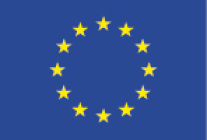Multiple communities are now interested in NEOs for very different reasons ranging from science to planetary defence and commercial objectives (e.g., mining).
Given the shared scientific and technological basis, all of these communities require knowledge and modelling capabilities of asteroid properties, as well as the capability to perform close proximity operations and make relevant measurements.
The multi-disciplinary approach at the heart of NEO- MAPP, is perfectly suited for providing the significant improvements required in each of these aspects.
The most threatening NEOs - in terms of collision frequency with the Earth - are the smaller ones, i.e. below 1 km in size. Yet, they are also the population least known to us, as ground observations cannot provide adequate information at these sizes. Space missions that are currently visiting two NEOs, namely the JAXA Hayabusa2 mission and the NASA OSIRIS-REx mission, confirm that big gaps still exist in our knowledge, as they keep changing our understanding of asteroids, much like previous NEO missions (NASA NEAR- Shoemaker and JAXA Hayabusa).
These small bodies are very diverse (Fig. 1), have very complex histories and their low-gravity environment challenges our intuition. The limited number (4) of visited NEOs with a rendezvous mission already allowed us to obtain the first direct measurements of surface properties and, therefore, to go from ‘zero knowledge’ about these properties to a few crucial data points.
Nevertheless, it remains a challenge to extract from these space mission data the relevant information that allow us to determine and model the main processes that have shaped those asteroids, let alone generalize to the whole NEO population.

